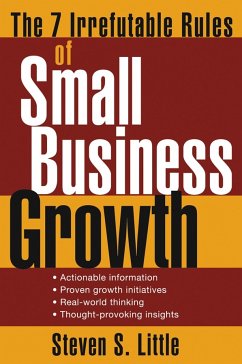
Business Plans to Game Plans (eBook, PDF)
A Practical System for Turning Strategies into Action, Revised Edition
Versandkostenfrei!
Sofort per Download lieferbar
19,99 €
inkl. MwSt.
Weitere Ausgaben:

PAYBACK Punkte
0 °P sammeln!
Breaking down complex concepts into simple and effective action plans, author Jan King will help you profit from her extensive experience and avoid common mistakes. This new revised edition elaborates on the six critical principles of running a small business that helped guide King to success: * Set standards and give your employees the tools to meet your goals * Lead by example * Look to the long term-the very long term * Find the important details and focus on them * Watch for variances from expected results * Face reality when you look at your company and take action Business Plans to Game ...
Breaking down complex concepts into simple and effective action plans, author Jan King will help you profit from her extensive experience and avoid common mistakes. This new revised edition elaborates on the six critical principles of running a small business that helped guide King to success: * Set standards and give your employees the tools to meet your goals * Lead by example * Look to the long term-the very long term * Find the important details and focus on them * Watch for variances from expected results * Face reality when you look at your company and take action Business Plans to Game Plans will help you turn your vision into a thriving business equipped to weather any market! Order today!
Dieser Download kann aus rechtlichen Gründen nur mit Rechnungsadresse in A, B, BG, CY, CZ, D, DK, EW, E, FIN, F, GR, HR, H, IRL, I, LT, L, LR, M, NL, PL, P, R, S, SLO, SK ausgeliefert werden.












